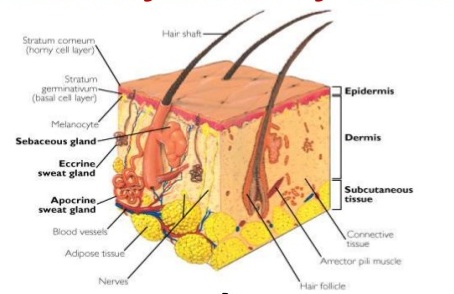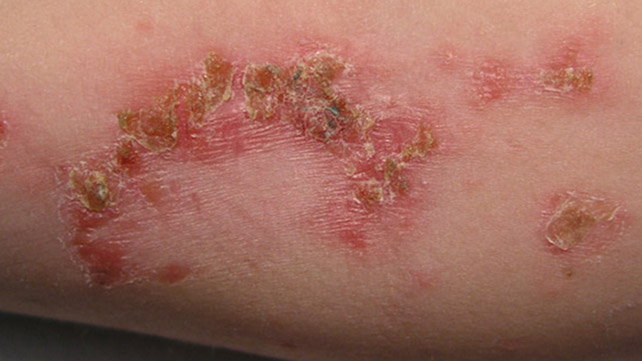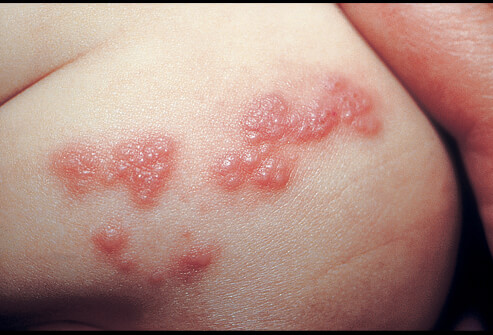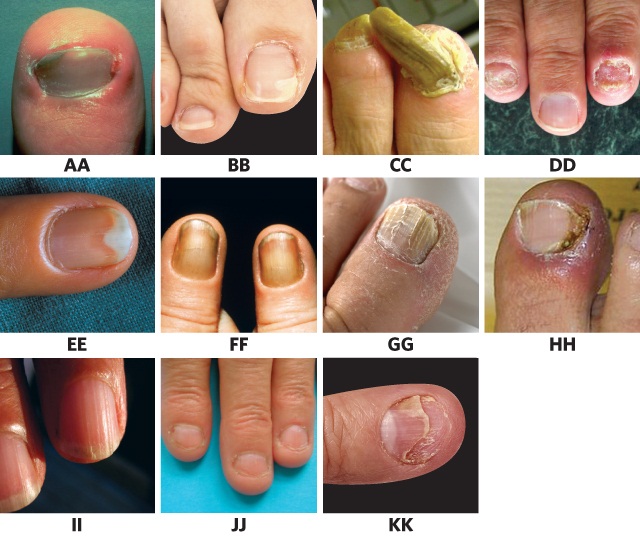Management Of Skin Disease
Topical therapy employs a vehicle (ointments, creams, lotions, gels) to deliver an active ingredient to the skin, to provide a protective barrier, or to hydrate and moisturize the skin.
There are many types of topical treatments, including:
(1) Antipruritics, e.g. calamine, are used to relieve itching
(2) Keratolytics, e.g. salicylic acid, urea, are used to remove hyperkeratotic skin
(3) Tars act by reducing the thickness of the epidermis
(4) Corticosteroids have anti-inflammatory and immunosuppressive effects that are useful in treating many skin disorders
(5) Calcipotriol (an analogue of 1,25-dihydroxycholecalciferol) reduces epidermal proliferation and is used in local treatment of plaque psoriasis
(6) Retinoids influence immune function and have some anti-inflammatory activity and are used in acne
(7) Antiseptics, e.g. benzoyl peroxide, chlorhexidine
(8) Antifungal agents
(9) Sunscreens
(10) Anaesthetics/analgesics….
1. Bacterial Skin Infections
-
- Leprosy: Leprosy is caused by a slow-growing type of bacteria called Mycobacteriumleprae (M. leprae). Leprosy is also known as Hansen’s disease, after the scientist who discovered M. leprae in 1873.
- Carbuncles: A carbuncle is a red, swollen, and painful cluster of boils that are connected to each other under the skin.
- Staph Infection: The infection often begins with a little cut, which gets infected with bacteria. These staph infections range from a simple boil to antibiotic-resistant infections to flesh-eating infections.
- Cellulitis: Cellulitis is a common infection of the skin and the soft tissues underneath. It happens when bacteria enter a break in the skin and spread.
- Impetigo: Impetigo is a highly contagious bacterial skin infection. It can appear anywhere on the body but usually attacks exposed areas.
- Boils: A boil is a skin infection that starts in a hair follicle or oil gland. At first, the skin turns red in the area of the infection, and a tender lump develops. After four to seven days, the lump starts turning white as pus collects under the skin.
- Pilonidal Cyst and Abscess: A pilonidal cyst occurs at the bottom of the tailbone (coccyx) and can become infected and filled with pus. Once infected, the technical term is pilonidal abscess.

2. Fungal Skin Infections
-
- Fungal Skin Infections: Fungal infections of the skin are very common and include athlete’s foot, jock itch, ringworm, and yeast infections.
- Ringworm: Worms don’t cause ringworm. Rather, this superficial skin infection, also known as tinea, is caused by fungi called dermatophytes.
- Athlete’s Foot: Athlete’s foot is a common fungal infection and you don’t have to be an athlete to get it. This annoying ailment occurs in boys, girls, men, and women of all ages.
- Candidiasis (Yeast Infection): Candidiasis is an infection caused by a group of yeast. There are more than 20 species of Candida, the most common being Candida albicans. These fungi live on all surfaces of our bodies.
- Sporotrichosis: This fungus is related more closely to the mold on stale bread or the yeast used to brew beer than to bacteria that usually cause infections. The mold is found on rose thorns, hay, sphagnum moss, twigs, and soil. Therefore, the infection is more common among gardeners who work with roses, moss, hay, and soil.
- Fungal Nail Infections: A fungal nail infection occurs when a fungus attacks a fingernail, a toenail, or the skin under the nail, called the nail bed.

3. Viral Skin Infections
-
- Molluscum Contagiosum: Molluscum contagiosum is a viral skin infection that causes either single or multiple raised, pearl-like bumps (papules) on the skin.
- Shingles: Shingles (herpes zoster) results from a reactivation of the virus that also causes chickenpox.
- Chickenpox: Chickenpox (varicella), a viral illness characterized by a very itchy red rash, is one of the most common infectious diseases of childhood.

Nail Diseases
Your toenails and fingernails protect the tissues of your toes and fingers. They are made up of layers of a hardened protein called keratin, which is also in your hair and skin. The health of your nails can be a clue to your overall health. Healthy nails are usually smooth and consistent in color. Specific types of nail discoloration and changes in growth rate can be signs of lung, heart, kidney, and liver diseases, as well as diabetes and anemia. White spots and vertical ridges are harmless.
Nail problems that sometimes require treatment include
- Bacterial and fungal infections
- Ingrown nails
- Tumors
- Warts
Keeping your nails clean, dry, and trimmed can help you avoid some problems. Do not remove the cuticle, which can cause infection.

